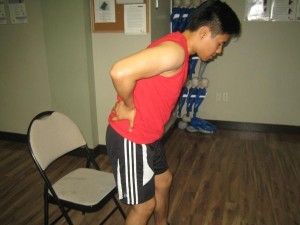Participation in water polo has increased drastically throughout the years. Proper equipment, sportsmanship, preparation and strengthening can help prevent water polo injuries as well as enhance and improve performance in the sport.
Always bear in mind that water polo is a physically challenging sport that combines the rigors of wrestling, swimming and repetitive throwing. Just like with basketball, it involves bursts of activity around the goal and during transition as well as subtle movements and positioning under the water. These factors contribute to higher risk for water polo injuries with shoulder injuries as the most common.
Common water polo injuries
Shoulder injuries
The arms are in a vulnerable position when cocking to throw. The tears on the labrum can occur from both acute injuries such as dislocations and from repetitive injuries. The throwing action in water polo is different from throwing in other sports since the legs do not have steady support. Understandably, this can lead to increased fatigue of the muscles surrounding the shoulder blade and upper back.
The water polo injuries involving the upper extremities usually include shoulder pain. It is best to focus on dry-land core and shoulder strengthening is vital for the prevention and rehabilitation of shoulder pain and weakness.

Knee injuries
The eggbeater kick during practice and competition can place strain on the knee which is similar when performing the breaststroke which typically results to injuries such as meniscal tears and strains on the medial collateral ligament.
There are preventive activities that focus on good flexibility of the hip and strengthening of the hamstring and quadriceps. The dry-land training before the season, cross-training and water treading exercises can prevent water polo injuries.
Hand and wrist injuries
Twisting, grasping and blocking during the game can result to finger sprains and dislocations. In case the pain in the wrist or hand persists or there is evident deformity, an X-ray might be performed to detect possible fractures. The sprains can be managed with buddy taping but might also require hand therapy. Always bear in mind that proper sportsmanship is the key to prevention.
Back and spine injuries
When playing water polo, the spine and back are subjected to combined bending and rotation forces more often than other throwing sports. Understandably, this makes the lower back and neck prone to water polo injuries such as a strain or tear in the lumbar disk. Luckily, severe trauma to the spine rarely occurs. In most cases, prevention is emphasized with core abdominal and back strengthening exercises.
Facial injuries
Ear and eye injuries from the opponent hands and ball strikes might include eye cuts, facial fractures and eardrum rupture. It is vital to wear protective headgear with ear cups and ensure that the fingernails are neatly clipped and filed. Even though it is difficult to completely prevent these types of injuries, the use of protective equipment can minimize the risk.
When to seek medical care
Water polo injuries that are accompanied by weakness, loss of sensation, deformity, ringing or muffled hearing, severe or persistent pain, blurred vision or persistent bleeding requires evaluation by a doctor.
Pain due to overuse or minor injuries can be managed with adequate rest and pain medications such as acetaminophen or ibuprofen. The pain and swelling can also be managed by alternating ice and heat therapy.
